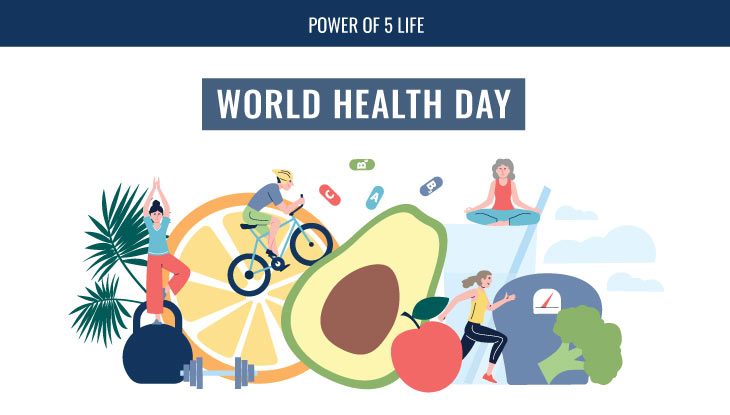Since the beginning of 2020 I have been doing a lot of juggling. That’s not a complaint; I enjoy what I do for a living. Being a geriatrician is like being a juggler. I often take care of individuals who have multiple complex medical and psychological problems, trying to keep them from crashing to the ground. Juggling is part of the challenge I look forward to every day.
As I have become more proficient at juggling medical problems (and with the maturing of my children), I have added several other items to my life as a juggler. This includes becoming an author and self-publishing four books and supporting my projects by learning the ins and outs of marketing. In addition, I have been writing blogs like this one to encourage and stimulate my audience/fans/followers.
The Benefits of Habit Journaling
Last January, in collaboration with my wife Melissa, we published our complement to The Power of 5: The Ultimate Formula for Longevity and Remaining Youthful book entitled The Power of 5: A Journal for Health, Longevity and Wellness.
In support of our publication, I have supplemented my knowledge base by learning more about routines and habits, as noted by the recent blogs written on this topic. Furthermore, I’ve done some introspection. In the process of journaling I discovered gaps in my own processing of the Power of 5.
Since the COVID pandemic hit, I have not been able to participate in my weekly Tai Chi sessions. I have found time to add other types of activities and exercises to my fitness routine, though. This enables me to meet my goal of 450 minutes of exercise each week. Additionally, I have adjusted my wake-up time each day to allow for a morning stretching routine followed by 5-10 minutes of meditation before heading out to work.
Most importantly, I discovered I had been miscalculating the balance between my daily nutritional intake versus my daily energy requirements (in other words, I was eating more calories than my body was burning). I made adjustments and have effectively reduced my weight and BMI. It has been noticeable to the few people I see in person but not so much to those who see just the top of my body during Zoom calls and FaceTime.
The Disconnect Between Knowing and Doing
The big point of this blog is the disconnect between knowing and doing: when you take stock of what you’re really doing and write it down, you discover things you may not be otherwise aware of or are just plain oblivious toward.
Here are a few of the things I personally did to improve.
- While I had been working on time-restricted eating (intermittent fasting), I was drinking my protein shake an hour before lunch. I fooled myself into thinking it wouldn’t make a difference—it did.
- I was eating too many pickles thinking they were low in calories, but they were in fact very high in salt.
- For variety, I changed my after-dinner treat/snack to watermelon. It is low in calories and very high in fluid content and fiber. It provides me with fluid I might not ordinarily be consuming and fiber to fill me up if I did not feel satisfied by my portion-controlled dinner.
- In keeping with intermittent fasting, I eliminated any after-dinner snacks that had been creeping into my mouth. No more pretzels dipped in mustard, and no more gobs of nuts. Nuts are packed with healthy fats, but when you eat multiple, large handfuls they do more harm than good.
- Lastly, I added sauerkraut to my diet. I have been reading a lot about the importance of a healthy microbiome—the bacteria that flourish in our intestines (I’ll write more about this in a future blog). It seems that this population of bacteria exert a lot of control in most organ systems in our bodies.
In an attempt to improve the functioning of my microbiome, I sought out foods that make a favorable impact. Yogurt is one example, but since I no longer eat dairy products this was not an option for me. Fermented foods are another choice. That includes kimchi (a very spicy Korean salad) and sauerkraut. I have always loved sauerkraut, so it is a great option for me to add to my diet. It is fermented, low in fat and carbohydrates, and tastes delicious, especially if served with mustard
Step-by-Step Improvements
So it all comes back to the importance of journaling, being honest with yourself, and holding yourself accountable.
Journaling helped me to discover this firsthand by helping me make necessary adjustments, step by step.
- To adjust my daily routine, I started out by making small changes, including tightening up my time-restricted meals.
- I changed my exercise/activity routine to a daily minimum of 30 minutes during the work week. On weekends, I exercise for 90 minutes each day.
- Though I had been meditating most mornings, I now have a more consistent way of meditating each weekday since I have temporarily stopped rounding in the hospital.
- I incorporated each of these actions into my daily routine over a period of two months. They have all become new healthy habits added to my Power of 5 day.
It’s time for you to take charge of your Power of 5, step by step, using The Power of 5 Journal. This will improve your health and change your life.
You’re just a click away from wellness …
To a Long and Healthy Life,
David Bernstein, MD



